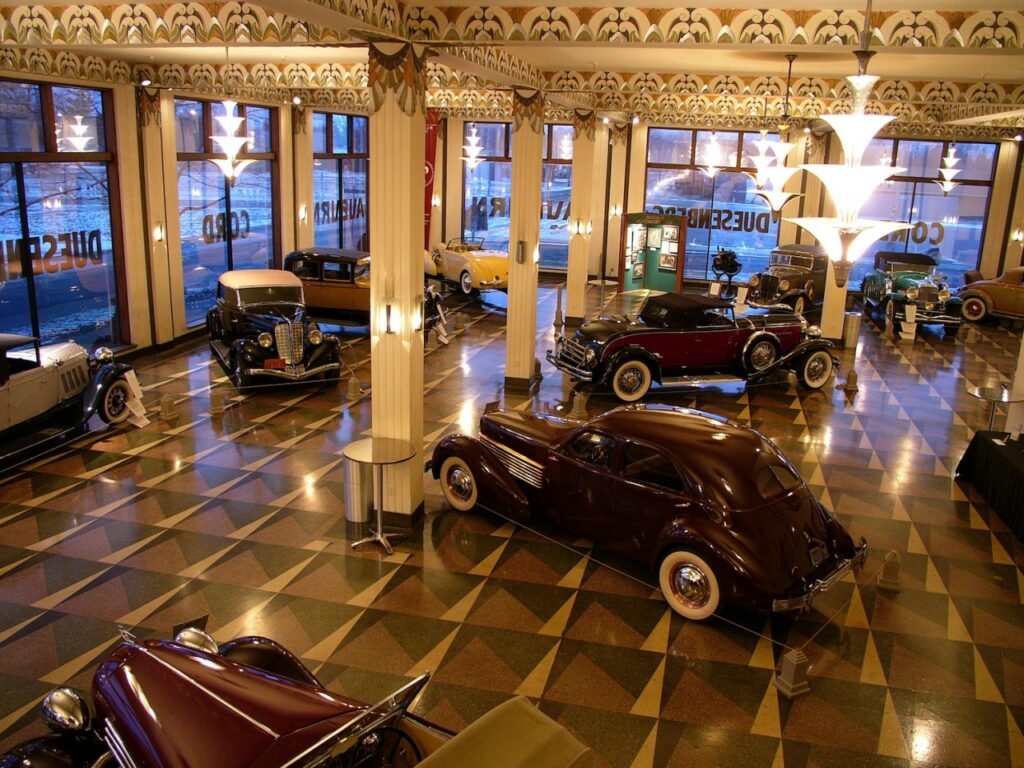
The Auburn Cord Duesenberg Museum is located in Auburn, Indiana, in the building of the automobile manufacturer’s former executive and general offices, engineering and experimental design departments, design studios, and showroom. It retains much of the look of its past occupants; the first floor showroom is spacious and opulent, with high ceilings, chandeliers, art deco columns, and an elegant center stairway, with popular music from the 1920s filling the grand space. The second and third floors include automotive displays intermingled among intact conference rooms and private offices of past automotive leaders and entrepreneurs. The narrow hallways are filled with archival items including old photographs, period advertising, and colored design renderings.
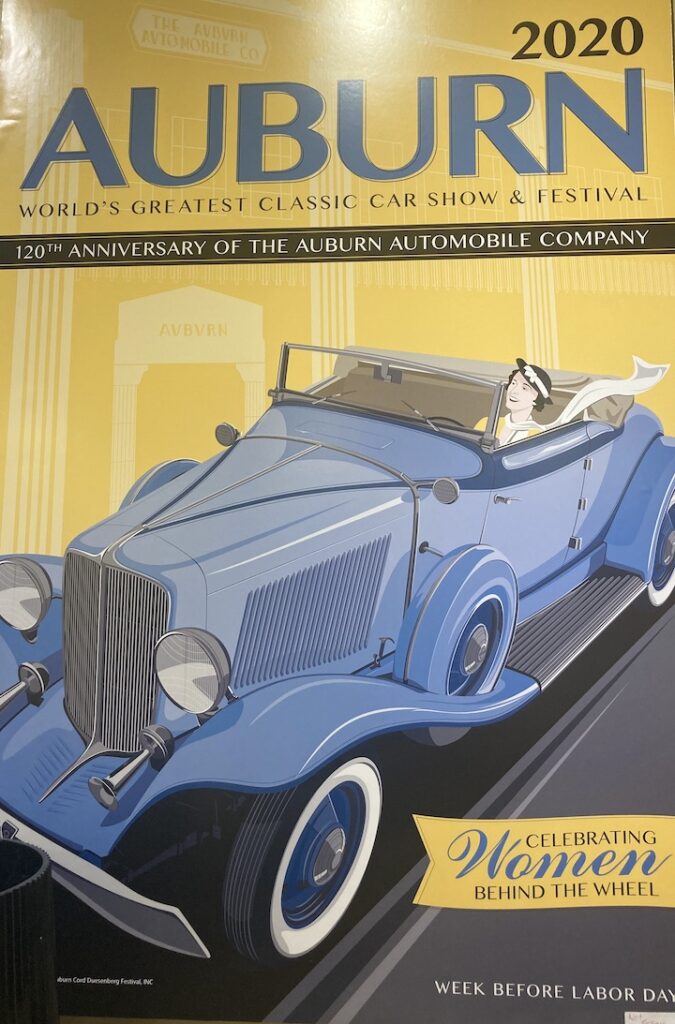
The three prominent automotive brands housed in the museum – Auburn, Cord, and Duesenberg – were high-priced luxury and racing vehicles produced between 1900 to 1937. Auburn was wholly owned by the Cord Corporation; entrepreneur E.L. Cord acquired Duesenberg in 1926 to add to his stable of stylish and expensive cars. The Depression, and the economic downturn that followed, saw an inevitable sales decline for the Cord empire. The company was sold and dissolved in 1937.
Other vehicles on display in the museum include ‘The Cars of Indiana,’ rare and unusual vehicles no longer in production once manufactured in the Hoosier state, as well as a gallery of racers and record-setters. Exhibits on the second and third floors include advertising campaigns, the work of design studios, blueprint rooms, as well as engines and technological innovations of the day.
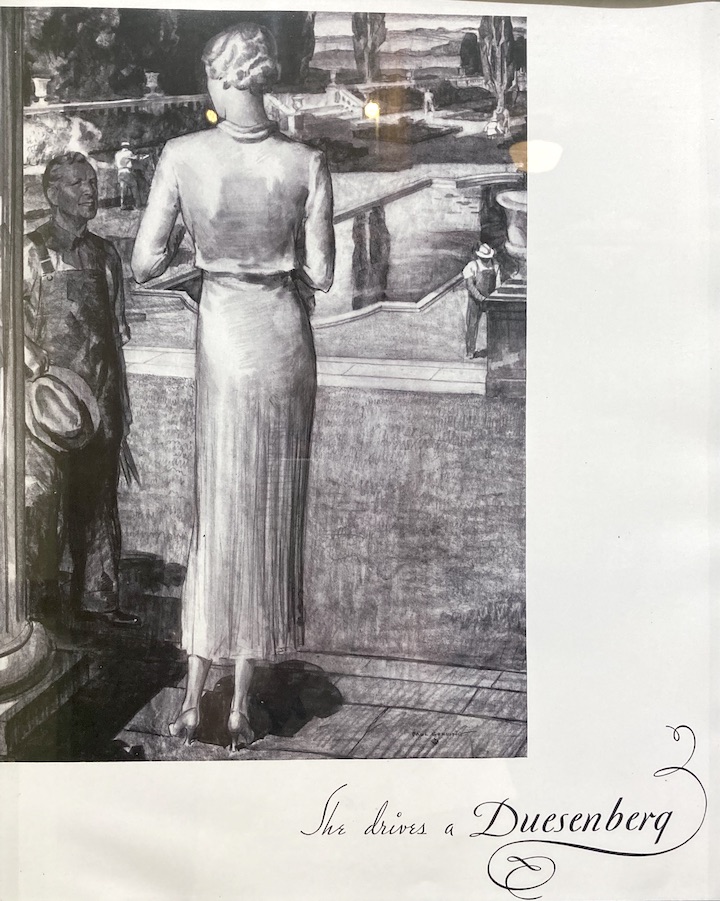
As might be expected in a museum seeped in automotive history, regional identity, and the accomplishments of exceptional men, women’s presence within its celebrated walls is subtle at best. However, because of the nature of the Auburn – Cord – Duesenberg product, female representation was, in fact, an important component of the automotive brand. This is evident in the promotional materials that adorn the walls of the building’s second floor. As one of the accompanying placards notes, ‘Auburn ads frequently featured glamourous female models situated in lavish settings.’ The models were called upon to reflect class, elegance, and style, as well as to suggest that owning such a vehicle would infer such qualities on the individual who drove it. As another card conveyed, ‘these ads were notable because they featured a lifestyle and not the product.’ The presence of female models in these advertisements suggest the stylish women were more successful in eluding elegance and class than the cars themselves. Photographs hung throughout the museum – with unnamed women as passengers – also serve to associate the automobile with a certain upscale and desirable lifestyle.
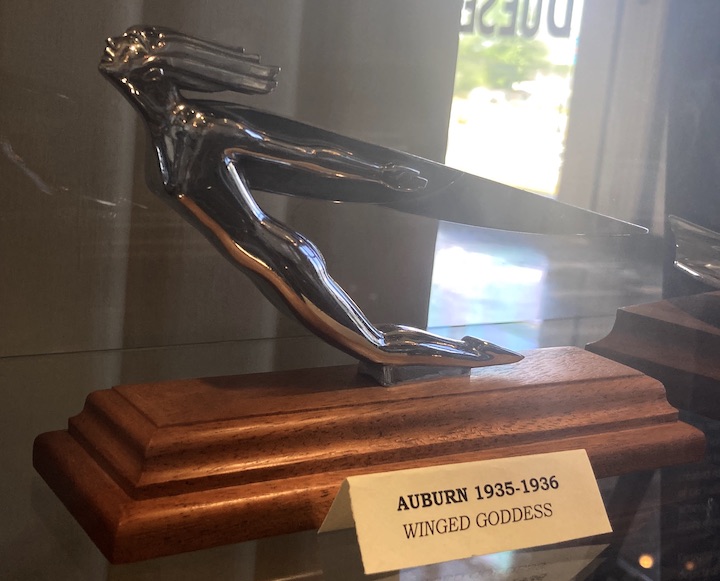
Women also graced automotive exteriors in the form of hood ornaments. These sleek, elongated, goddess representations in steel also lent credence to the Duesenberg or Auburn as luxurious vehicles for the upper class.
Within the lineup of cars on display, women as well as notable events involving women are called upon to place a vehicle within a specific time and place in history. Referring to Amelia Earhart [an automobile aficionado] or women’s suffrage alongside an automobile of that era offers an opportunity to imagine how or why an automobile might be used. Women’s stories – anecdotes of an event or driving experience – are also integrated into the histories of particular automobiles. Women referred to by name as donors were often keepers of cars – maintaining the automobile after the death of a father or spouse before donating it to the museum archives. These women serve as touchstones within the cluster of vehicles, often providing a human element to the business of cars.
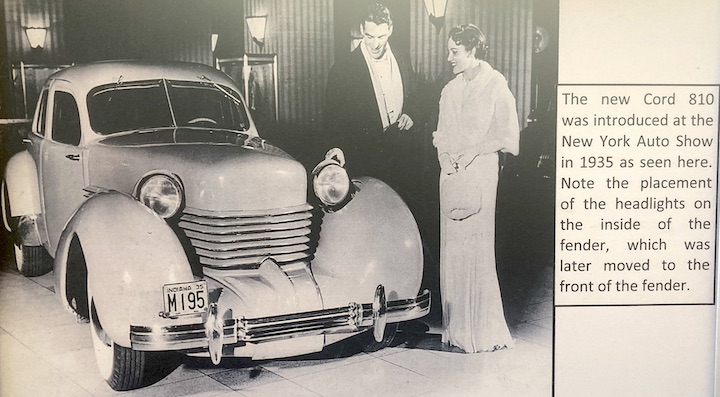
This was not my first visit to the ACD Museum. I stopped in decades ago while in the area for a dog show [which is a whole other conversation]. More recently, I traveled to Auburn for SAH [Society of Automotive Historians] business. But this encounter provided me with the opportunity to search out women’s presence in what I suspect exists for most as a very masculine space. As I discovered in the ACD as well as most of the automotive museums I’ve spent time in, women are visible if only you look for them.